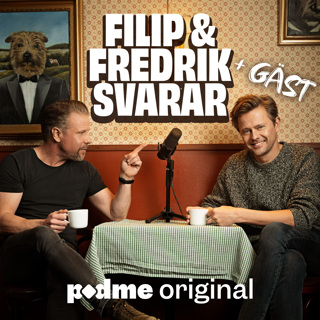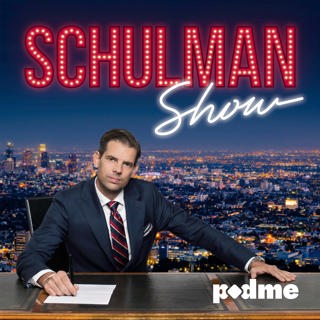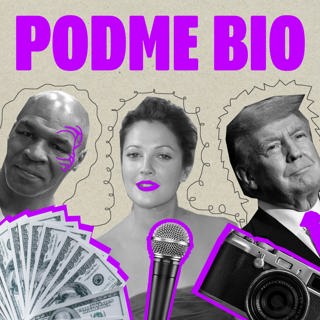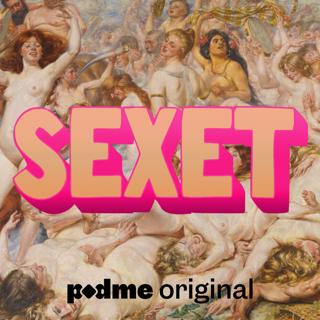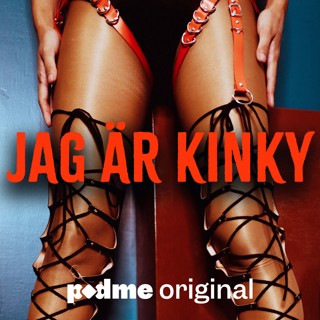
The Story Behind "Home" and "Truth," Edward Sharpe's Companion Songs of Darkness and Light
Alex Ebert is lead singer, songwriter and resident shaman of Edward Sharpe and the Magnetic Zeros, the hippie-inspired outfit that broke out in 2009 with a fresh sound that was difficult to pin down. Via his alter-ego messiah character Edward Sharpe, Ebert and the Magnetic Zeros' breakout single and signature song across four albums is, of course, "Home." An ebullient and endearing anthem of love and pure joy, the song has become iconic thanks to its instantly recognizable whistles and indelible opening lyric, "Alabama, Arkansas/ I do love my ma and pa." But the veneer of joy on "Home" hides an underlying truth: Ebert used Edward Sharpe to rise above his own personal demons. And out of that reality, Ebert later penned his solo song “Truth” – from his first solo album, Alexander – to set the record straight to his fans as a companion piece to "Home." Ebert joined host Peter Csathy for the 10th episode of The Story Behind the Song podcast to discuss his classic "Home." He takes listeners through the inspirations to the production (including that spoken-word ode to Castrinos), and reveals how the darker realities underpinning "Truth" connect to that original hit. Along the way, Ebert's candid, raw conversation reveals his musical journey from rapper to spiritual "Bad Guru" (the name of his philosophy and spirituality newsletter). Listen to the episode, and then be sure to like, subscribe, and review The Story Behind the Song wherever you get your podcasts. You can also keep an eye on the Consequence Podcast Network for updates on all our podcasts, and follow host Peter Csathy on Twitter @pcsathy and check out his company CREATV Media. Support The Story Behind the Song by checking out StubHub: https://stubhub.prf.hn/l/mVRZyZV Advertising Inquiries: https://redcircle.com/brands Privacy & Opt-Out: https://redcircle.com/privacy
21 Mars 20221h 20min

The Story Behind Manchester Orchestra's Unexpected Global Smash "The Silence"
Manchester Orchestra is one of Indie music’s darlings, and deservedly so. The band is fearless in how it has evolved over the years, moving from the in-your-face guitar thrashes of 2014’s Cope to the much more cinematic and layered approach of their last two albums, 2017’s A Black Mile to the Surface and their recent The Million Masks of God. But something strange happened along the way to Million Masks. The video for "The Silence," the closing song from A Black Mile, began to gain traction on YouTube. Though never formally released as a single, the track did get a music video in December 2018 -- a visual that now boasts over 111 million views. In this bonus ninth episode of The Story Behind the Song podcast, host Peter Csathy interviews Hull about "The Silence" phenomenon, touching on why the artist believes this particular track blew up around the world with such resonance. He also discusses the remarkable "Angel of Death" from Million Masks, the latest single from the gorgeously complex album. (Csathy previously wrote a guest column for Variety about how Million Masks had a special healing impact on him during the time of his mother's death.) Listen to this bonus episode about Manchester Orchestra's "The Silence" above, or check out the full video of the interview at Consequence. Make sure to like, subscribe, and review The Story Behind the Song wherever you get your podcasts. You can also keep an eye on the Consequence Podcast Network for updates on all our podcasts, and follow host Peter Csathy on Twitter @pcsathy and check out his company CREATV Media. Support The Story Behind the Song by checking out StubHub: https://stubhub.prf.hn/l/mVRZyZV Advertising Inquiries: https://redcircle.com/brands Privacy & Opt-Out: https://redcircle.com/privacy
7 Mars 202251min

The Story Behind Judy Collins' Classic Version of Sondheim's "Send in the Clowns"
Judy Collins is a music icon, plain and simple. Collins' storied career, first inspired by folk legends Woody Guthrie and Pete Seeger, is now in its seventh decade and touches much of American music royalty. (Songwriting legend Leonard Cohen is just one such icon she elevated.) Her musical journey continues this month with the release of Spellbound – surprisingly, her first-ever full album of original songs. Amongst her respected oeuvre, Collins’ biggest hit -- a Grammy-winning Platinum smash -- is her emotional rendition of Stephen Sondheim’s classic A Little Night Music show tune “Send in the Clowns." In this eighth episode of The Story Behind the Song podcast, host Peter Csathy speaks with Collins about how her rendition of "Send in the Clowns" came to be, and why it continues to resonate above the hundreds of other versions of the song. The two also discuss Collins' wistful new original country-folk song "When I Was a Girl in Colorado" from Spellbound. Throughout the conversation, Collins is warm, funny, and passionate -- about her music, her connection with fans, and what she believes in (including the latest Spotify controversy and performance royalties for musicians). Listen now, and watch the full discussion over at Consequence. Then make sure to like, subscribe, and review The Story Behind the Song wherever you get your podcasts. You can also keep an eye on the Consequence Podcast Network for updates on all our podcasts, and follow host Peter Csathy on Twitter @pcsathy and check out his company CREATV Media. Support The Story Behind the Song by checking out StubHub: https://stubhub.prf.hn/l/mVRZyZV Advertising Inquiries: https://redcircle.com/brands Privacy & Opt-Out: https://redcircle.com/privacy
21 Feb 202243min

The Story Behind X's "Los Angeles," a Thrashing Punk Critique About Intolerance
Punk rock in the mid-to-late '70s and early '80s meant different things to different people, depending on which city you were in. For Los Angeles, it was the band X that helped define the sound from their Venice home. (The band sits at #13 on Consequence's own list of the Best Punk Bands of All Time.) X’s most iconic song happens to be the title track of their debut LP, Los Angeles. "Los Angeles" reflects all of that city’s deep complexities, including racial, sexual and religious intolerance, in a biographical tale centered on a figure known personally by Doe and Cervenka. As told via lyrics intended to shock, this person so hated others in LA not like herself that she moved several time zones away to escape them. Her POV is so raw that certain radio stations that previously championed the song no longer play it. But the song’s driving power remains and was always meant to be a social commentary, a thrashing no-holds-barred critique about intolerance that is perhaps even more relevant today. In this seventh episode of The Story Behind the Song podcast, host Peter Csathy interviews X’s John Doe about the origins of “Los Angeles,” co-written by Cervenka and produced by Ray Manzarek of The Doors (a band also known for writing songs about LA’s deep, dark underbelly). The two also discuss Doe’s recording of Cervenka’s very different, haunting song, “Alone in Arizona” from Doe’s 2016 solo album, Westerner. Listen to the podcast above, or check out the full video of the discussion at Consequence. Then, make sure you’re subscribed to The Story Behind the Song wherever you get your podcasts to catch each episode of the monthly series. You can also keep an eye on the Consequence Podcast Network for updates on all our podcasts, and follow host Peter Csathy on Twitter @pcsathy and check out his company CREATV Media. Theme music courtesy of Juan Pieczanski. Support The Story Behind the Song by checking out StubHub: https://stubhub.prf.hn/l/mVRZyZV Advertising Inquiries: https://redcircle.com/brands Privacy & Opt-Out: https://redcircle.com/privacy
18 Jan 20221h

The Story Behind Crowded House's Anthemic "Don't Dream It's Over"
Crowded House’s "Don't Dream It's Over" is one of the most memorable tunes of the '80s, and the band's Neil Finn explores that lasting legacy on the latest edition of The Story Behind the Song. Crowded House helped launch a new post-New Wave era in pop music in 1986, creating beautifully simple, earthy melodies driven by guitars rather than synths. Lead singer, guitarist, and songwriter Neil Finn founded the band after the demise of Split Enz (a Kiwi band out of New Zealand with several iconic songs of its own.) Finn’s most iconic song is, without a doubt, “Don’t Dream It’s Over” – you know, the “Hey Now, Hey Now” song. It has transcended mere “classic” status over the years to become one of the most enduring music anthems of the past several decades, inspiring sing-alongs to this day. Neil wrote this song in less than 24 hours, something this podcast has revealed to be quite common for artists when creating their most lasting, signature songs. In this sixth episode of The Story Behind the Song, host Peter Csathy interviews Finn about “Don’t Dream It’s Over” and how it came to be. The two also discuss Neil’s beautiful love song “Fall at Your Feet” from Crowded House’s third album, Woodface. Through it all, Finn touches on his continuing “out of the box” musical journey, from Split Enz, to Crowded House, to solo artist, to Fleetwood Mac -- and what’s next for it all. Listen to the new episode above, or check out the full video of the interview with Finn here. Make sure you like and subscribe to The Story Behind the Song wherever you get your podcasts, and follow the Consequence Podcast Network for updates on all our series. (You can also catch Crowded House on their 2022 tour by getting tickets here.) For more from our host, follow Peter Csathy on Twitter @pcsathy and check out his company CREATV Media. Theme music courtesy of Juan Pieczanski. Support The Story Behind the Song by checking out StubHub: https://stubhub.prf.hn/l/mVRZyZV Advertising Inquiries: https://redcircle.com/brands Privacy & Opt-Out: https://redcircle.com/privacy
20 Dec 202158min

The Story Behind Blondie’s Iconic “Rapture”
Blondie are, without question, one of the most successful, iconic, and influential bands in rock and roll history. Inducted into the Rock & Roll Hall of Fame 15 years ago, the Debbie Harry-fronted group has sold over 40 million albums worldwide and continues to release new music. But the “rock and roll” label doesn’t do justice to the group’s genre-bending music. What started as a punk band in the mid-1970’s in New York City after Harry and guitarist Chris Stein broke off from their earlier band, The Stillettoes, Blondie (first called Angel and the Snake) always innovated, infusing pop, disco, new wave, reggae, and rap elements into their music. Which brings us to one of Blondie’s signature songs, the cleverly titled “Rapture." In 1981, the Autoamerican single became the first song featuring rapped vocals to top the US charts, and its accompanying video the first "rap" clip to appear on MTV. Stein and Harry penned the song after experiencing their first rap performance hosted by Fab 5 Freddy, who is prominently mentioned in the song's first rap line and appears in the video. For the fourth episode of The Story Behind the Song, host Peter Csathy spoke with Harry and Stein about "Rapture" and its progenitor "Yuletide Throwdown." Csathy digs deep with the artists on the songs' journeys, the impact of "Rapture" on other artists, and how "Yuletide Throwdown" just may become a new holiday classic. Make sure you like and subscribe to The Story Behind the Song wherever you get your podcasts, and follow the Consequence Podcast Network for updates on all our series. For more from our host, follow Peter Csathy on Twitter @pcsathy and check out his company CREATV Media. Theme music courtesy of Juan Pieczanski. Support The Story Behind the Song by checking out StubHub: https://stubhub.prf.hn/l/mVRZyZV Advertising Inquiries: https://redcircle.com/brands Privacy & Opt-Out: https://redcircle.com/privacy
15 Nov 202145min

The Story Behind Tears for Fears' Unexpected Hit "Mad World"
Tears for Fears ruled the pop charts for much of the 1980s with their unique mix of instantly catchy synth sounds, irresistible hooks, and confessional lyrics. Like everybody in music, the duo of singer/songwriter/guitarist Roland Orzabal and singer/bassist Curt Smith wanted to rule the world, and they certainly achieved that with a string of hits spanning several albums. It all began with their 1983 debut album, The Hurting. The LP's haunting breakthrough hit, "Mad World," was originally intended to just be a B-Side to lead single "Pale Shelter." It was the band's A&R exec David Bates who pushed for its release as a single, and the rest is history. The song took on a life of its own and still widely influences artists and delights new generations -- especially after it was completely reimagined by Gary Jules for the cult classic movie Donnie Darko. Tears for Fears' Roland Orzabal joins host Peter Csathy on The Story Behind the Song to discuss "Mad World," as well as Tears for Fears' new single "The Tipping Point," the title track on their newly announced album, which will be their first in 17 years. Don't forget to like and subscribe to The Story Behind the Song wherever you get your podcasts, and follow the Consequence Podcast Network for updates on all our series. For more from our host, follow Peter on Twitter @pcsathy and check out his company CREATV Media. Support The Story Behind the Song by checking out StubHub: https://stubhub.prf.hn/l/mVRZyZV Advertising Inquiries: https://redcircle.com/brands Privacy & Opt-Out: https://redcircle.com/privacy
18 Okt 20211h 5min

Lindsey Buckingham Shares The Story Behind Fleetwood Mac's "Tusk"
In this third episode of The Story Behind the Song podcast, host Peter Csathy interviews Buckingham about the song “Tusk," diving into its inspiration, its meaning, its production, and its impact. In keeping with TSBTS’s mission, the guest musician also reveals the story behind one of their personal favorite tracks from their own catalog. In this case, Buckingham chose “On the Wrong Side,” his stand-out Fleetwood Mac-inspired track from his just-released self-titled solo album (his 7th and his first in ten years). Make sure you’re subscribed to The Story Behind the Song to catch each episode of the monthly series. You can also keep an eye on the Consequence Podcast Network for updates on all our podcasts. Theme music courtesy of Juan Pieczanski. Support The Story Behind the Song by checking out StubHub: https://stubhub.prf.hn/l/mVRZyZV Advertising Inquiries: https://redcircle.com/brands Privacy & Opt-Out: https://redcircle.com/privacy
20 Sep 202154min




